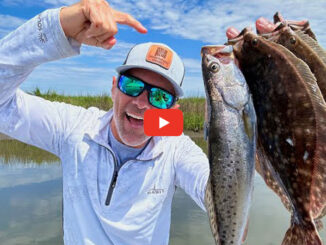
It isn’t what bait or where to fish…. it’s “How slow can you go?”
Fishing deep into winter calls for some changes in techniques and baits to account for the cold-blooded nature of fish. With slower metabolism due to the colder water, slower presentations are key to success. Kayak fishing lends itself to these techniques as anglers are moving slower and tend to give an area more time to produce before moving on.
Good weather days may still present some challenges such as low and sometimes dirty water. However, the key to getting bites is to slow down your presentation.
So this month, the main question isn’t what bait to fish with or where to go fishing, it’s “How slow can you go?”
Whether fishing fresh or saltwater species, the goal is to get your bait or lure right in front of the fish so it can grab a quick meal with little effort or energy expended. While they don’t need to eat a lot, they do need to breathe. Colder water contains higher levels of dissolved oxygen so they can sit fairly still and still get the air they need.
With the slower pace of kayak fishing, anglers can spend more time in one area working to pinpoint where the fish are holding. They tend to concentrate in deeper holes and a depth finder can be a big plus in locating groups of fish. If you don’t have a depth finder, simple tips like fishing the outside turns of a bayou helps to locate deeper areas. The tides scour these outer edges and they will always be deeper than the inside turns. Also, the mouths of drains or duck ponds are likewise usually deeper. In the Louisiana marsh, deep is sometimes a relative turn. Six feet is generally not considered deep, but is twice as deep as three feet and sometimes those few extra feet can make all the difference necessary.
Action at slow speed
Choose lures that can be worked slower and still provide enticing action. Spinnerbaits flash and vibrate on even the slowest of retrieves and that action can be just enough to entice a lethargic fish into a reaction strike. The golden rule is when you think you are working the lure slow enough, slow it down some more. They may not have to eat, but you can convince them to. Scented plastics and dead shrimp can sometimes help to attract such strikes.
Thoroughly fish any area that looks promising. You may find that fish are holding mere feet from where you weren’t getting any action. Work your bait from the deepest areas and up onto the shallower spots. Water temperature, wind, oxygen levels and bottom structure all combine to determine where they want to be and what they want to eat on any given day.
Keep an eye out for any signs of life. Winter waters are generally not as active as the warmer months. If you see a swirl, baitfish, or even a small current break, concentrate on that area with a variety of lures and retrieves.

Structure can also be key to finding concentrations of fish. Rock piles and jetties tend to warm in the sun and thereby raise the surrounding water temps a bit. Pilings, docks, trees and crab traps can also be key to holding fish in the area. Figuring out the day’s pattern is half the battle and once you unlock the keys, it can likely be successfully repeated during the trip.
Although sometimes available, live shrimp is generally off the menu at this time. The shrimp have left the marsh and live minnows are a wintertime staple. Slowly tight-lining bait fish imitation plastics or live minnows is a great way to draw strikes. The bait comes to the fish rather than vice versa. Slowly bouncing these along towards where you believe the fish are holding is a great way to entice strikes and locate a school.
Soft and subtle
Winter bites are notoriously soft and subtle. You may not actually feel a strike, but rather just a little resistance or slight change in feel. When that happens, set the hook. It could be grass or it could be a fish, but that is the only way to know for sure.
Using braided line helps increase the feel and sensation of these gentle strikes. With no stretch, lure movements are transmitted through the line and can be felt much more easily.
Try a little of everything. Suspending hard baits also work wonders on sluggish fish. With a slow sink rate and erratic movements with even the slightest twitch, these baits hang right in front of a fish and virtually dare it to strike. Fished super slow, these lures stay in the area longer and can draw reaction strikes when others can’t.
Don’t overlook the use of popping corks, but the retrieve needs to be decidedly different than when in summer. While usually cast and aggressively popped to mimic feeding fish, the cork in wintertime is used to suspend the bait in one place. Be it soft plastics, a live minnow or a piece of dead shrimp, subtle pops and twitches dangle the lure with just enough movement to convince a fish that it is an easy meal.
The key to cold-water kayak fishing is patience. Slow down your presentations as much as possible. Use the kayak to thoroughly fish all aspects of a particular area to make sure you are covering all bases. Choose lures and techniques that work best with slow retrieves. Stay in tune with your lure in order to feel for any different sensation at the end of your line.
Set the hook. It could be a snag or an opportunistic fish.


